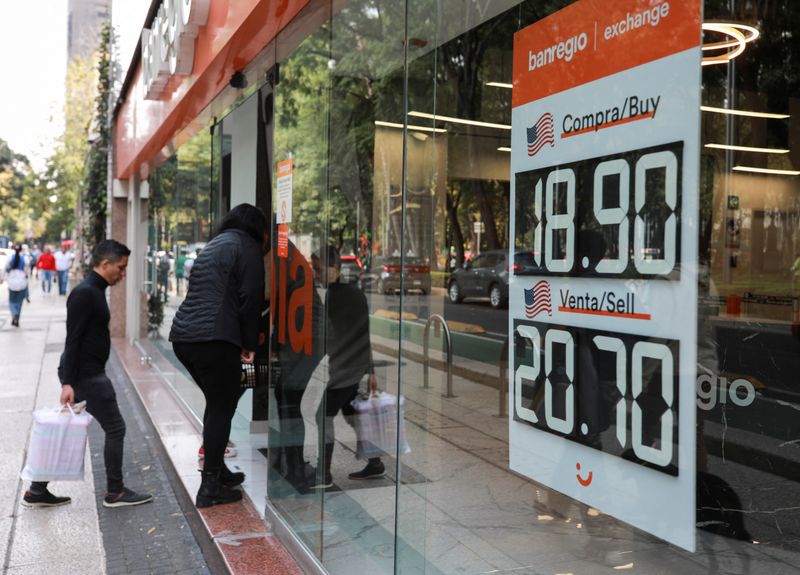
By Noe Torres
MEXICO CITY (Reuters) – The Mexican peso slid against the U.S. dollar on Tuesday evening in international trading as results in the U.S. presidential election started to roll in, extending a streak of volatility which has hit the currency and others in recent days.
The peso was trading as high as 20.3920 per greenback, nearly 1.5% weaker than its closing price earlier in the day and its weakest since September 2022. The peso touched the same level in regular daytime trading before reversing the losses.
Traders are bracing for more fluctuations as the vote counts from the hotly contested U.S. presidential election come in.
The peso’s weakness was seen as traders priced in the possibility that Republican Donald Trump could defeat Democratic candidate Kamala Harris. Trump has vowed to impose new tariffs on Mexican exports.
A Trump victory could pressure the currency to levels around 20.50 pesos per dollar, while a Harris win would likely push the currency to strengthen to around 19 pesos per dollar, according to Gerardo Copca, a MetAnalisis consultancy analyst. But if the outcome of the election is disputed, volatility would deepen, he said.
Reuters’ vote count shows Trump so far winning 105 Electoral College votes against 27 for Harris. A candidate needs at least 270 Electoral College votes to win.
“Since it’s such a close election and results will be slow to come in, we’ll likely see the reality (of the impact on the peso) during trading in London, tomorrow in the U.S. or even through the rest of the week,” said Jorge Gonzalez, who heads the consultancy Asesores en Divisas y Riesgos.
Earlier this year, the value of the local Mexican currency was battered after the ruling Morena party of leftist President Claudia Sheinbaum secured large majorities in Congress following June’s general election in Latin America’s second-biggest economy.
The congressional majorities paved the way for lawmakers to pass a controversial judicial overhaul in September that has provoked market jitters, with some investors doubting the safety of their investments under a more politicized judiciary.

Officials in the United States, by far Mexico’s top trade partner, have criticized the overhaul.
The peso has shed around 20% of its value so far this year against the U.S. dollar.
This post is originally published on INVESTING.



